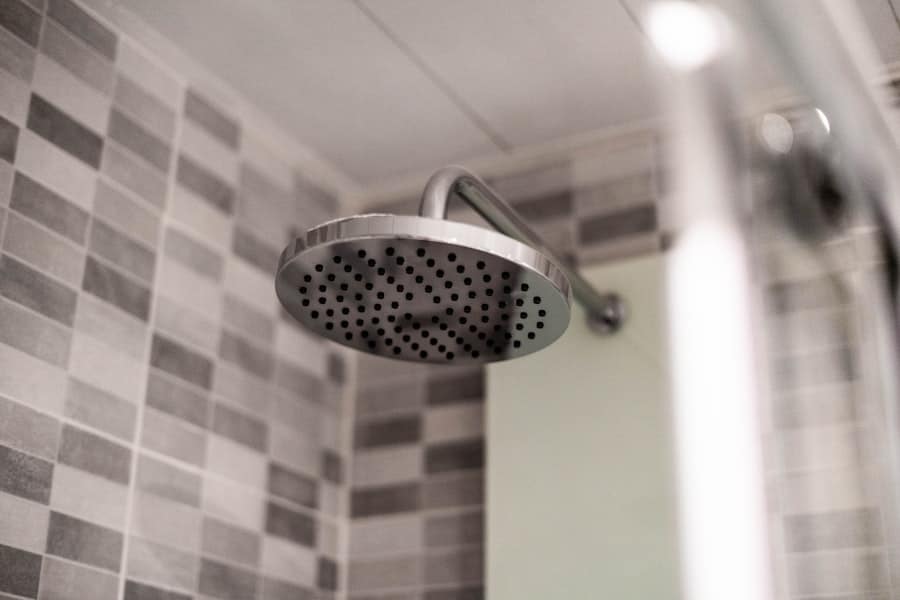Augmented Reality (AR) technology has emerged as a transformative force in the retail landscape, reshaping how consumers engage with products and brands. By overlaying digital information onto the physical world, AR creates immersive experiences that enhance the shopping journey. This technology allows retailers to bridge the gap between online and offline shopping, offering personalized experiences that cater to individual preferences and needs.
As consumers increasingly seek tailored solutions, AR provides a unique avenue for brands to connect with their audience on a deeper level. The integration of AR into personalized shopping experiences is not merely a trend; it represents a fundamental shift in consumer behavior. With the rise of mobile devices and advancements in AR software, shoppers can now visualize products in their own environments before making a purchase.
This capability not only boosts consumer confidence but also reduces the likelihood of returns, a significant concern for retailers. As brands continue to explore the potential of AR, the focus on personalization will only intensify, leading to more engaging and relevant shopping experiences.
Key Takeaways
- AR technology enhances personalized shopping experiences by allowing customers to virtually try on products and customize designs.
- Virtual try-on experiences using AR technology help customers make more informed purchasing decisions and reduce the need for physical try-ons.
- In-store shopping is enhanced with AR technology through features like interactive product information, virtual fitting rooms, and personalized recommendations.
- AR-powered personalized recommendations and product discovery improve the shopping experience by providing tailored suggestions based on customer preferences and behavior.
- Customizing products and designs with AR technology allows for unique and personalized shopping experiences, leading to increased customer satisfaction and brand loyalty.
The Role of AR in Virtual Try-On Experiences
One of the most compelling applications of AR technology in retail is the virtual try-on experience. This feature allows consumers to visualize how products, such as clothing, accessories, or cosmetics, will look on them without physically trying them on. For instance, beauty brands like L’Oréal and Sephora have developed AR applications that enable users to apply makeup virtually.
By using facial recognition technology, these apps can accurately map a user’s face and allow them to experiment with different shades and styles in real-time. This not only enhances the shopping experience but also empowers consumers to make informed decisions based on their unique features. In the fashion industry, companies like Warby Parker have adopted AR technology to revolutionize eyewear shopping.
Their app allows users to virtually try on glasses by using their smartphone camera, providing a realistic view of how different frames will look on their faces. This innovation has proven particularly beneficial during the pandemic when many consumers were hesitant to visit physical stores. By offering a safe and convenient way to try on products from home, brands can maintain customer engagement and drive sales even in challenging circumstances.
Enhancing In-Store Shopping with AR Technology

While online shopping has gained significant traction, in-store experiences remain vital for many consumers. AR technology enhances these physical shopping environments by providing interactive elements that engage customers and enrich their experience. Retailers can implement AR displays that provide additional product information, customer reviews, or even interactive games that encourage exploration within the store.
For example, IKEA has introduced an AR app that allows customers to visualize how furniture will fit into their homes before making a purchase. By scanning a room with their smartphone, users can see how different pieces of furniture will look and fit within their space. Moreover, AR can facilitate navigation within large retail spaces.
Stores can deploy AR-enabled apps that guide customers to specific products or sections based on their preferences or previous purchases. This personalized approach not only enhances customer satisfaction but also increases the likelihood of impulse purchases as shoppers discover new items along their journey. By integrating AR into the in-store experience, retailers can create a seamless blend of digital and physical shopping that resonates with tech-savvy consumers.
AR-Powered Personalized Recommendations and Product Discovery
Personalization is at the heart of modern retail strategies, and AR technology plays a crucial role in delivering tailored recommendations to consumers. By analyzing user data and preferences, AR applications can suggest products that align with individual tastes and needs. For instance, fashion retailers can utilize AR to create virtual wardrobes where users can mix and match clothing items based on their style preferences.
Additionally, AR can enhance product discovery by providing immersive storytelling experiences around products. Brands can create engaging narratives that showcase the features and benefits of their offerings through interactive AR content.
For example, a sports apparel brand might use AR to demonstrate how their clothing performs under various conditions, allowing customers to visualize the product’s functionality in action. This level of engagement fosters a deeper connection between consumers and brands, ultimately driving loyalty and repeat purchases.
Customizing Products and Designs with AR
The ability to customize products is another significant advantage offered by AR technology in personalized shopping experiences. Consumers increasingly desire unique items that reflect their individual tastes, and AR enables them to visualize these customizations before making a purchase. For instance, Nike has implemented an AR feature in its app that allows users to design their own sneakers by selecting colors, materials, and patterns.
Moreover, AR can facilitate customization beyond just aesthetics. Brands can leverage this technology to allow consumers to modify product features based on their specific needs.
For example, furniture retailers could enable customers to adjust dimensions or materials for items like sofas or tables through an AR interface. This level of personalization not only enhances customer satisfaction but also fosters a sense of ownership over the product, leading to increased brand loyalty.
The Impact of AR on E-commerce and Online Shopping

The rise of e-commerce has transformed the retail landscape, but it has also presented challenges for brands seeking to replicate the tactile experience of in-store shopping. AR technology addresses this gap by providing online shoppers with tools that enhance product visualization and interaction. For instance, furniture retailers like Wayfair have developed AR applications that allow customers to place virtual furniture in their homes using their smartphones or tablets.
This capability helps consumers assess size, style, and fit before making a purchase decision. Furthermore, AR can significantly reduce return rates in e-commerce by allowing customers to make more informed choices. When shoppers can visualize how a product will look or function in their own environment, they are less likely to experience buyer’s remorse after receiving their order.
This not only benefits consumers but also helps retailers minimize costs associated with returns and restocking. As e-commerce continues to grow, the integration of AR technology will be essential for brands looking to enhance customer satisfaction and drive sales.
Overcoming Challenges and Limitations of AR in Personalized Shopping
Despite its numerous advantages, the implementation of AR technology in personalized shopping experiences is not without challenges. One significant hurdle is the need for robust technological infrastructure. Retailers must invest in high-quality AR software and hardware to ensure seamless user experiences across various devices.
Additionally, there is a learning curve associated with adopting new technologies for both consumers and retailers alike. Brands must prioritize user education and support to maximize the effectiveness of their AR offerings. Another challenge lies in data privacy concerns.
As AR applications often require access to personal data for customization and recommendations, consumers may be hesitant to share sensitive information. Retailers must navigate these concerns by implementing transparent data practices and ensuring robust security measures are in place. Building trust with consumers is essential for fostering long-term relationships and encouraging them to embrace AR technology as part of their shopping experience.
The Future of AR Technology in Personalized Shopping Experiences
Looking ahead, the future of AR technology in personalized shopping experiences appears promising as advancements continue to unfold. As hardware becomes more accessible and affordable, we can expect broader adoption among retailers of all sizes. The integration of artificial intelligence (AI) with AR will further enhance personalization capabilities by enabling more sophisticated data analysis and predictive modeling.
This synergy will allow brands to anticipate consumer needs more accurately and deliver tailored experiences that resonate with individual shoppers. Moreover, as 5G technology becomes more widespread, the potential for real-time interactions through AR will expand significantly. Faster internet speeds will enable richer content delivery without lag, enhancing the overall user experience.
Retailers may explore innovative applications such as live-streamed shopping events where consumers can interact with products through AR while receiving real-time feedback from influencers or brand representatives. In conclusion, as augmented reality continues to evolve, its role in personalized shopping experiences will undoubtedly grow more significant. Retailers who embrace this technology will not only enhance customer engagement but also position themselves at the forefront of an increasingly competitive market landscape.
The future promises exciting possibilities for both consumers and brands as they navigate this dynamic intersection of technology and retail.
AR technology is not only revolutionizing personalized shopping experiences but also impacting various other industries. One related article worth exploring is a review of the best software for literature review, which can help researchers and academics streamline their work processes and enhance their productivity. To learn more about this helpful tool, check out this article.
FAQs
What is AR technology?
AR, or augmented reality, technology is a technology that superimposes a computer-generated image on a user’s view of the real world, thus providing a composite view.
How is AR technology transforming personalized shopping experiences?
AR technology is transforming personalized shopping experiences by allowing customers to virtually try on products, visualize how products will look in their own space, and receive personalized recommendations based on their preferences and behavior.
What are some examples of AR technology in personalized shopping experiences?
Examples of AR technology in personalized shopping experiences include virtual fitting rooms for trying on clothes, AR-powered visualizations for home decor and furniture, and personalized product recommendations based on user behavior and preferences.
What are the benefits of using AR technology in personalized shopping experiences?
The benefits of using AR technology in personalized shopping experiences include enhanced customer engagement, improved decision-making for customers, reduced return rates, and increased customer satisfaction.
How is AR technology being implemented in the retail industry?
AR technology is being implemented in the retail industry through mobile apps, in-store experiences, and online platforms to provide customers with interactive and personalized shopping experiences.

